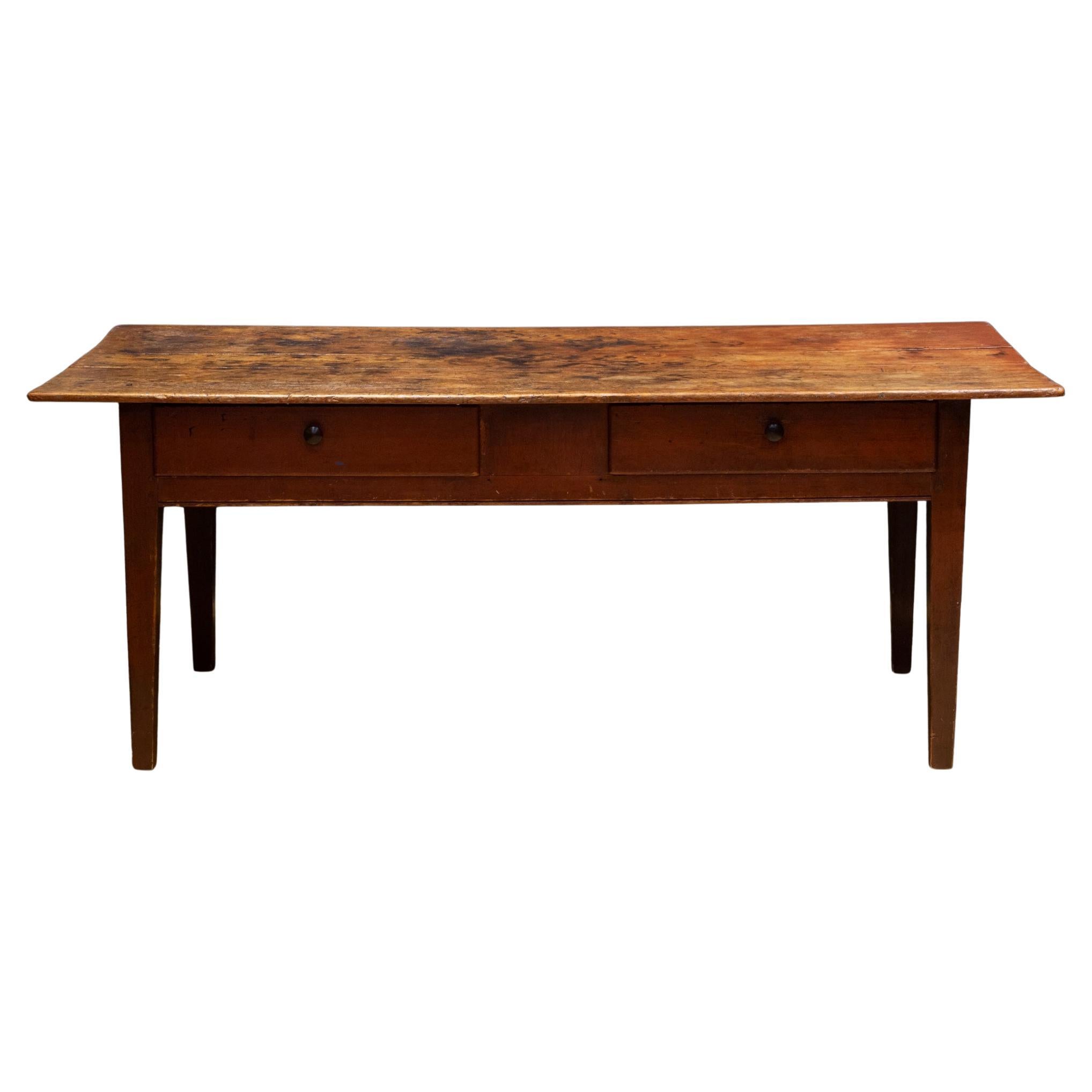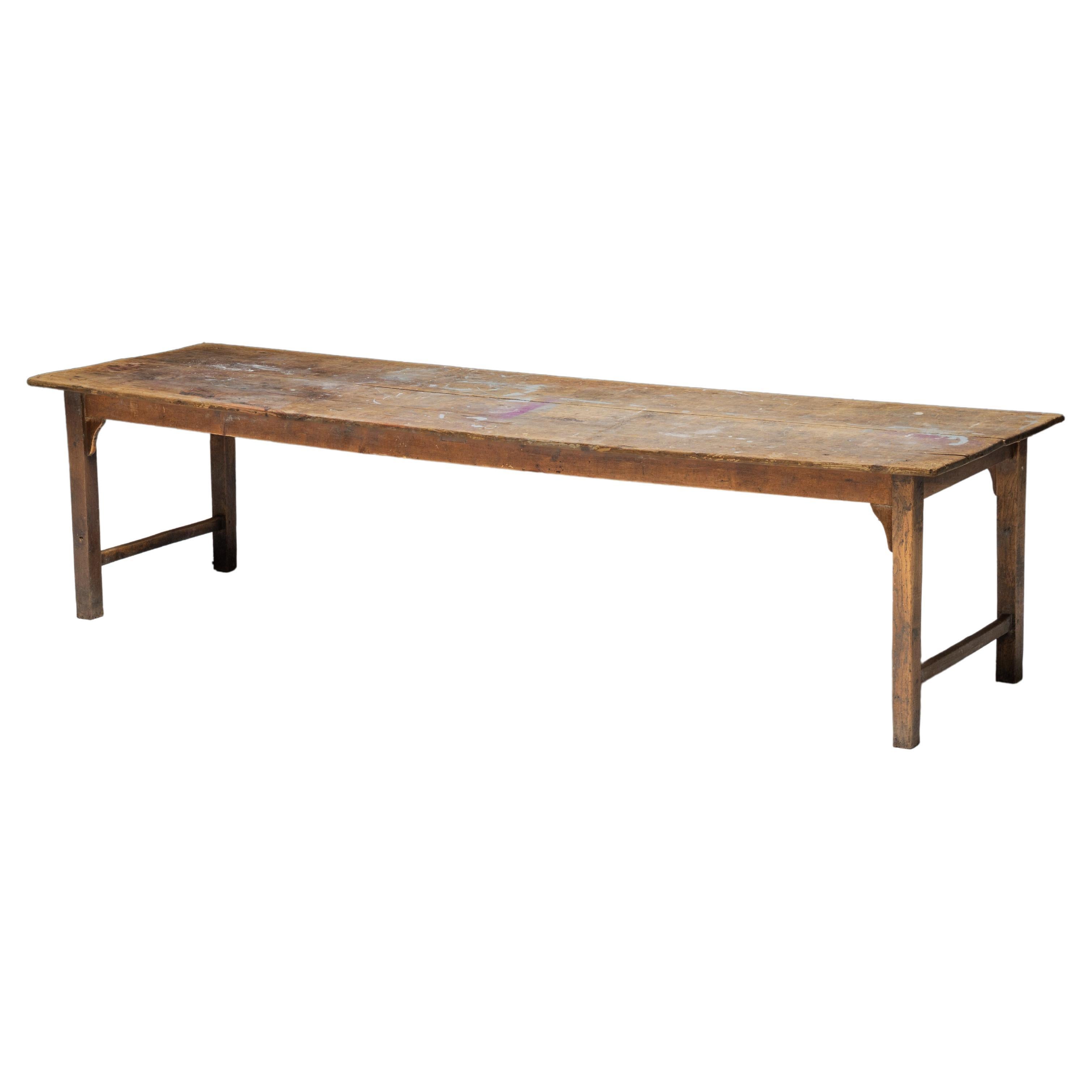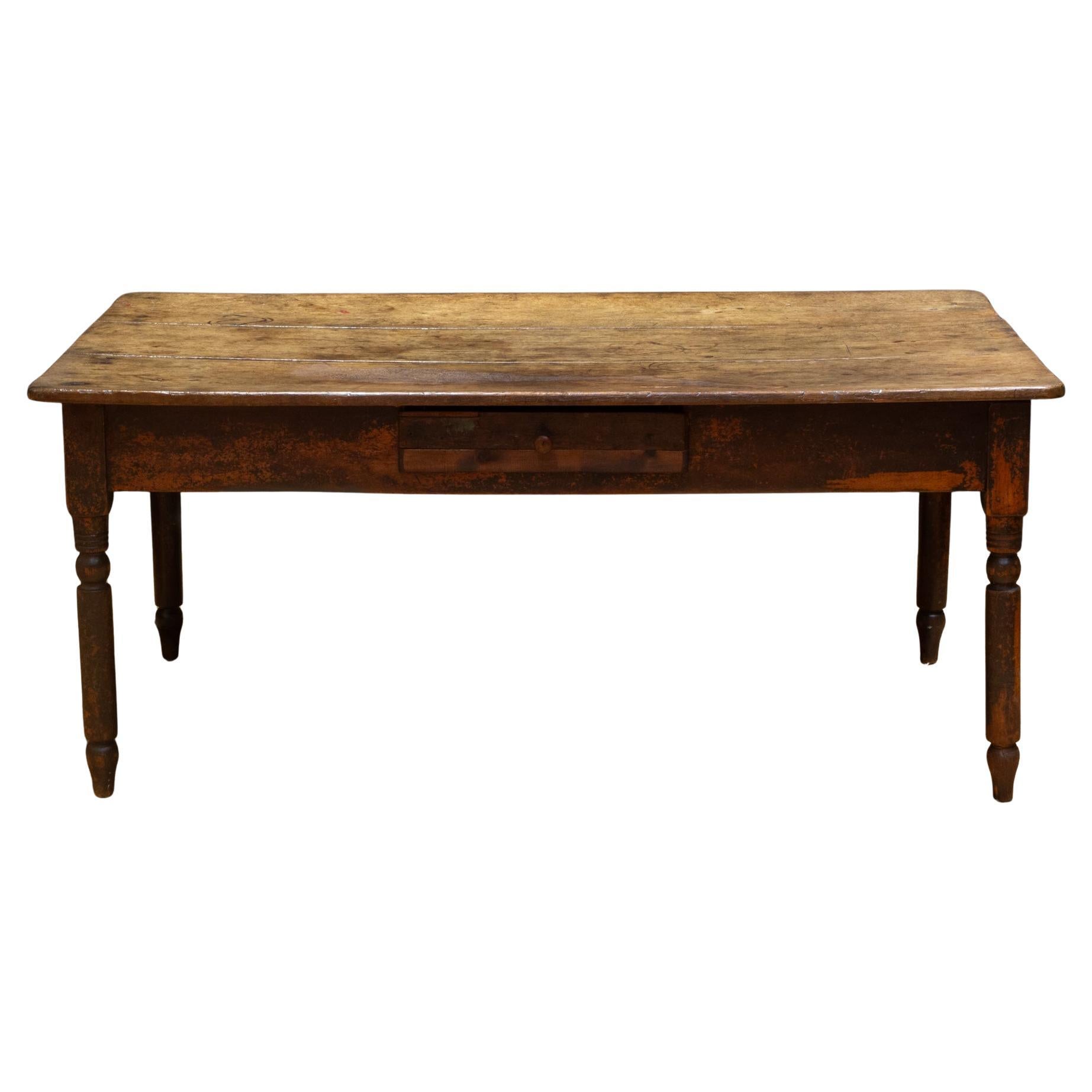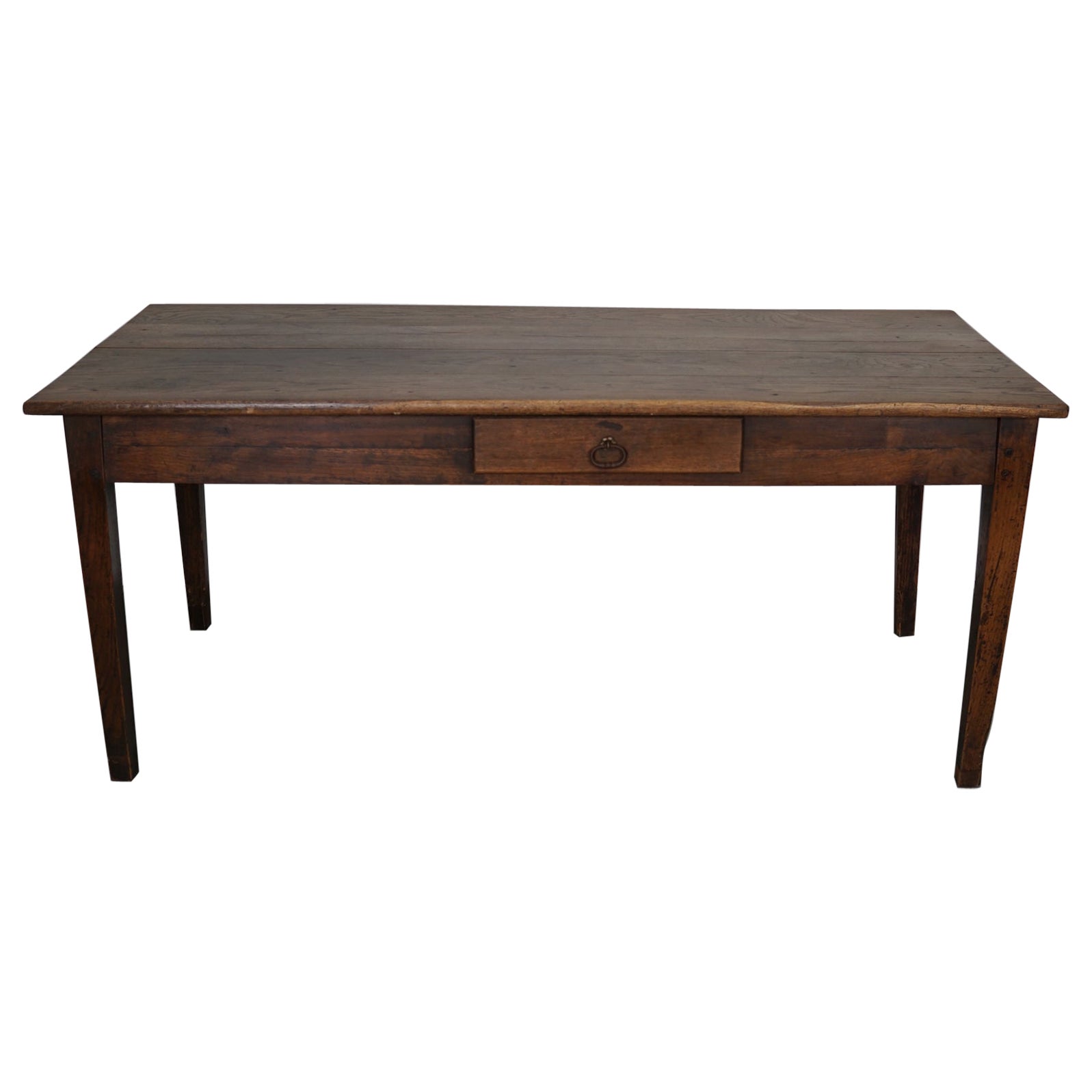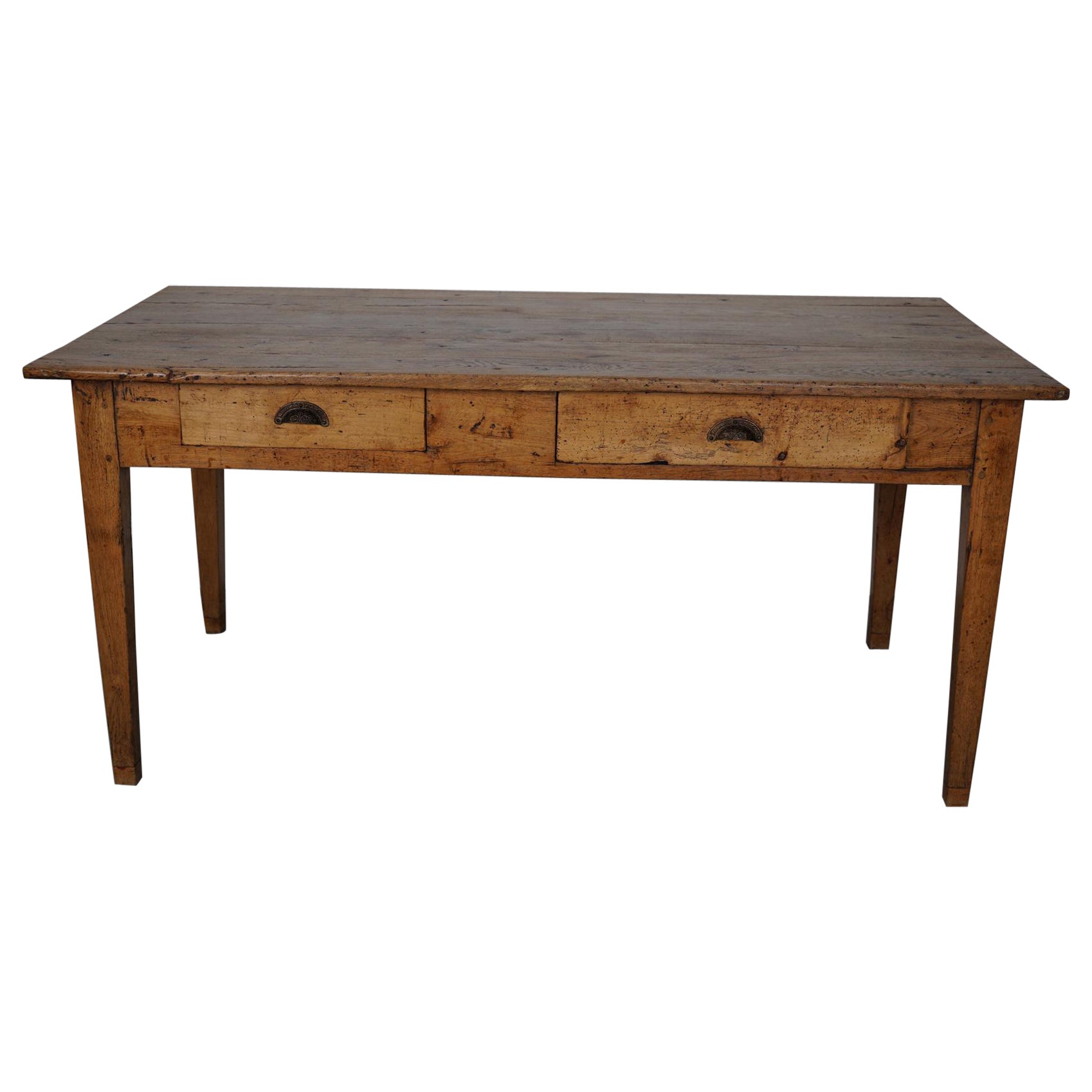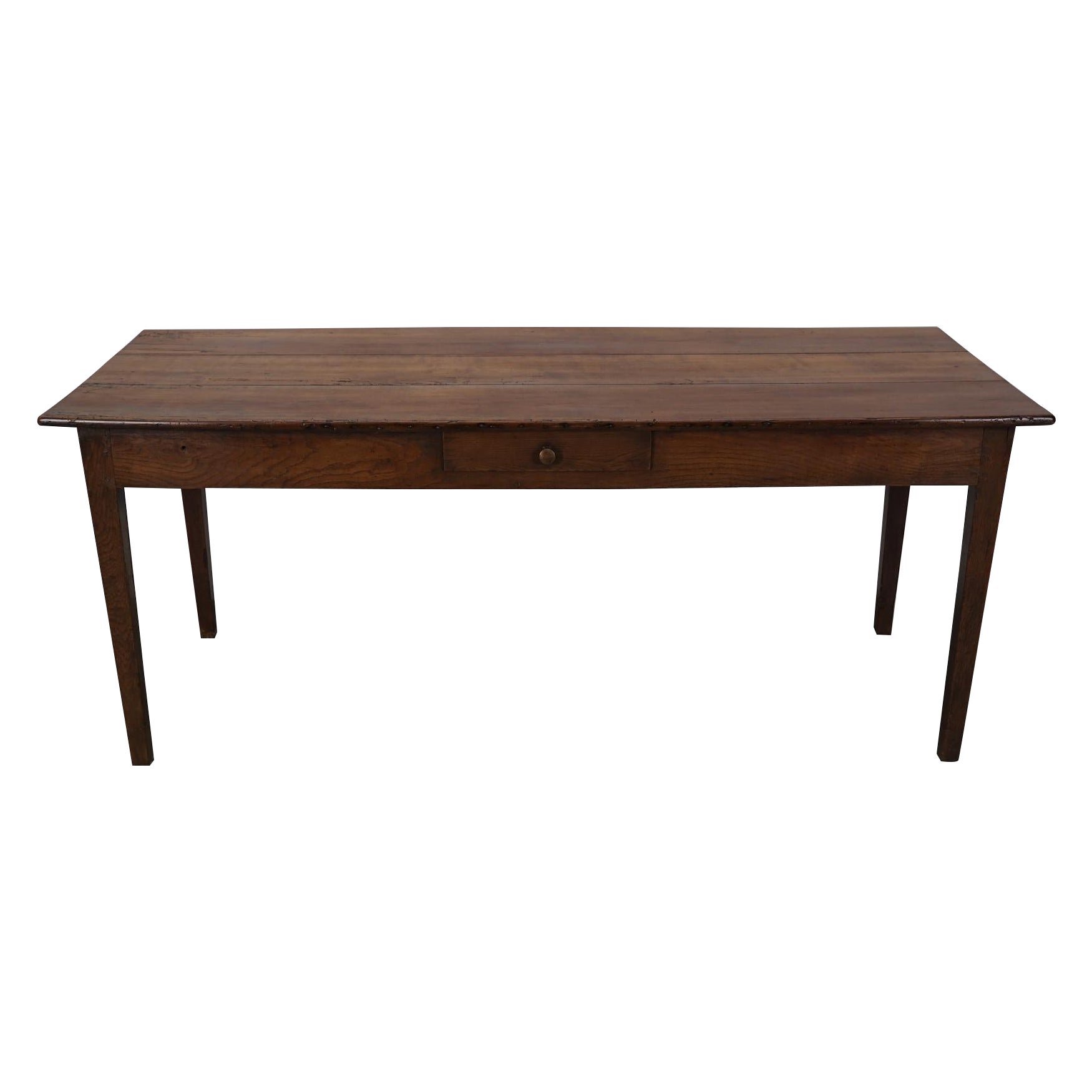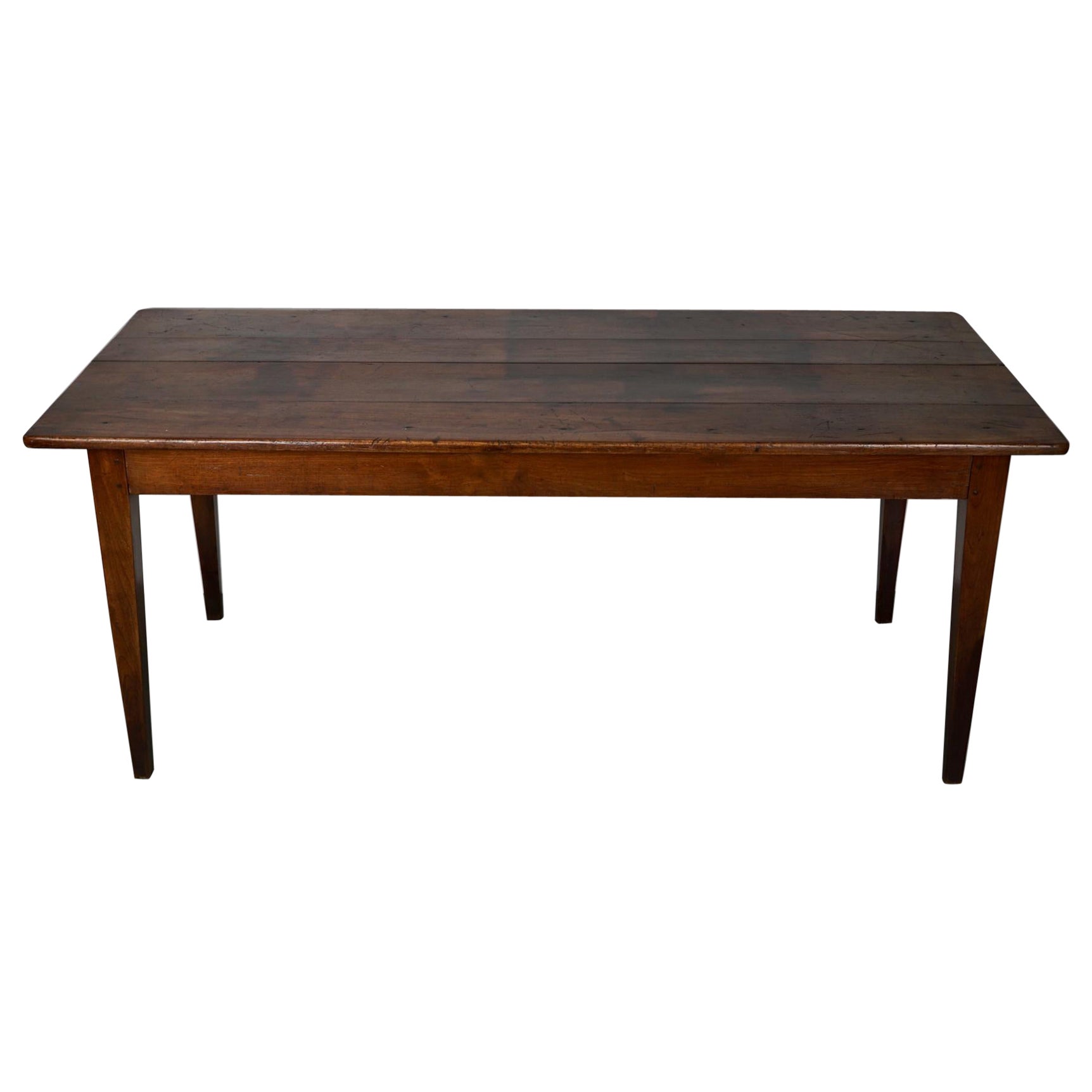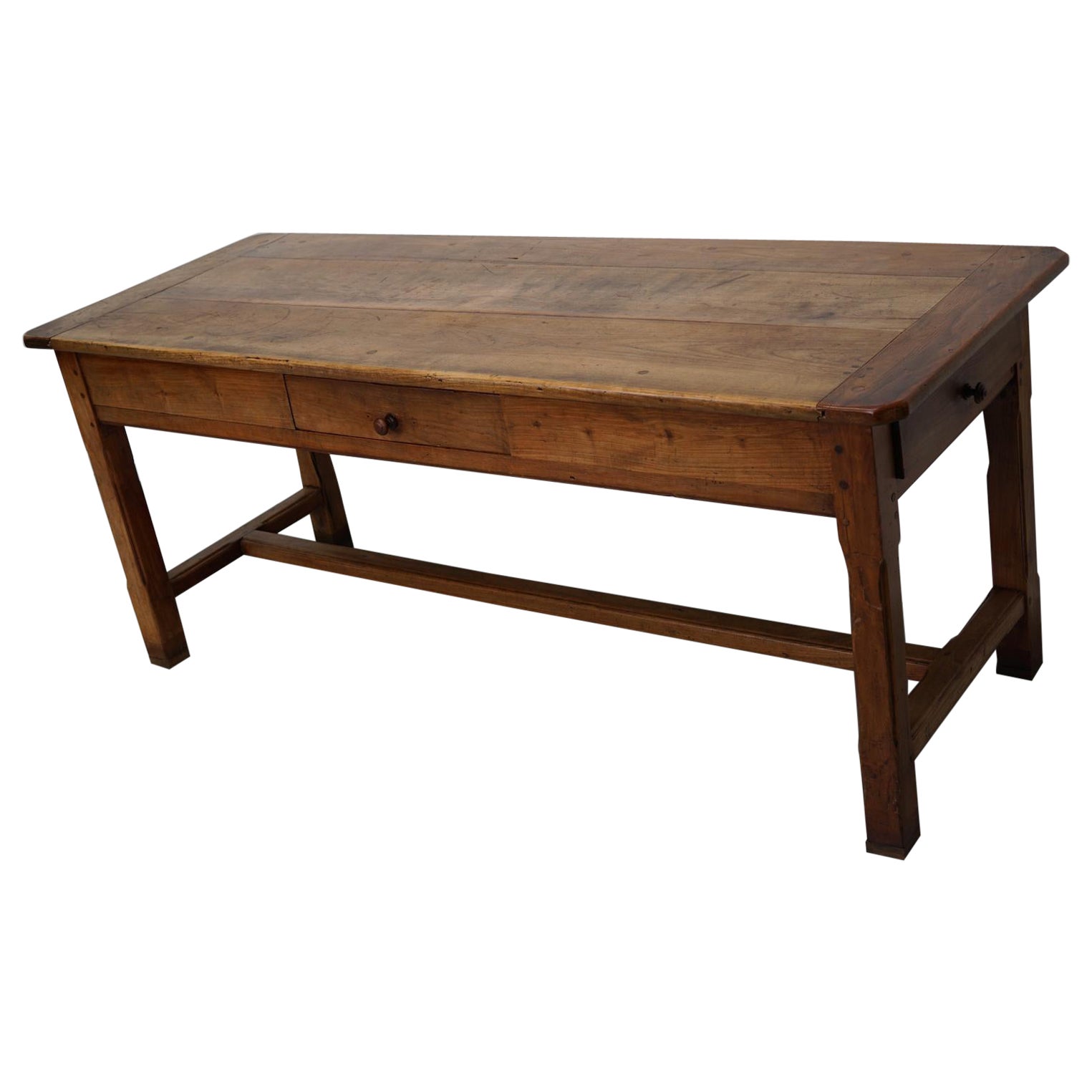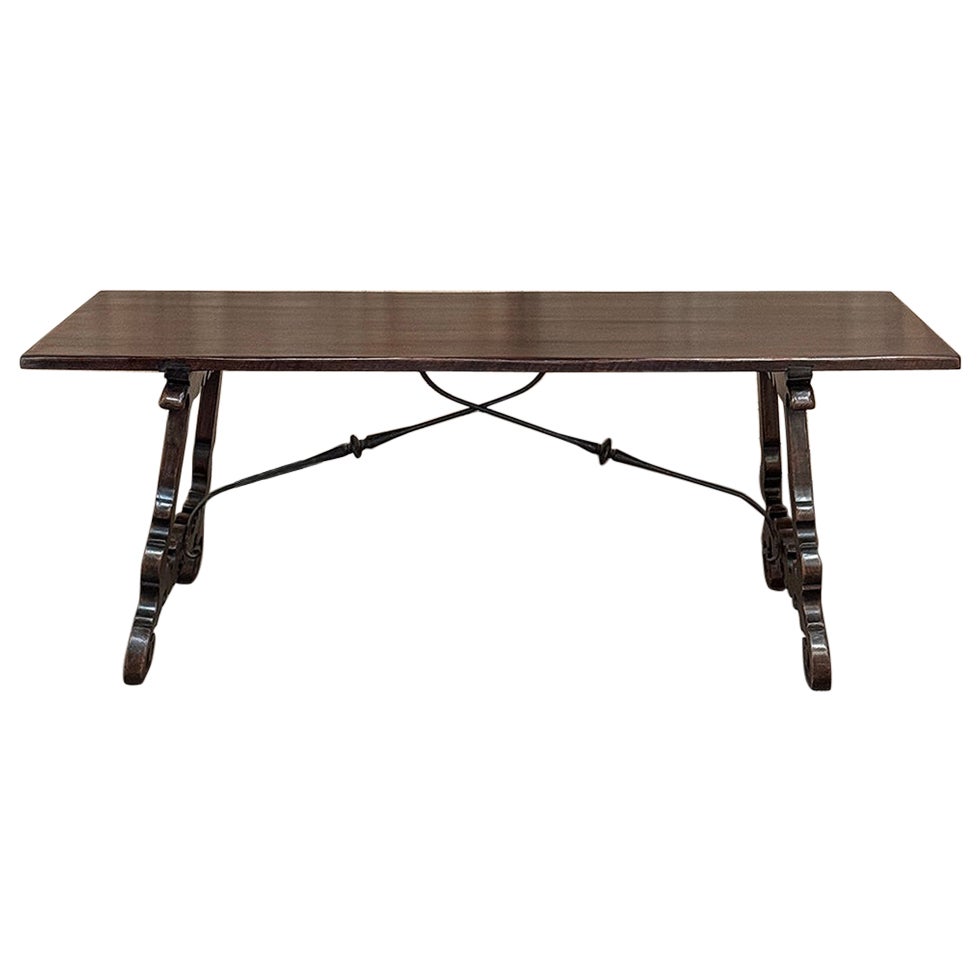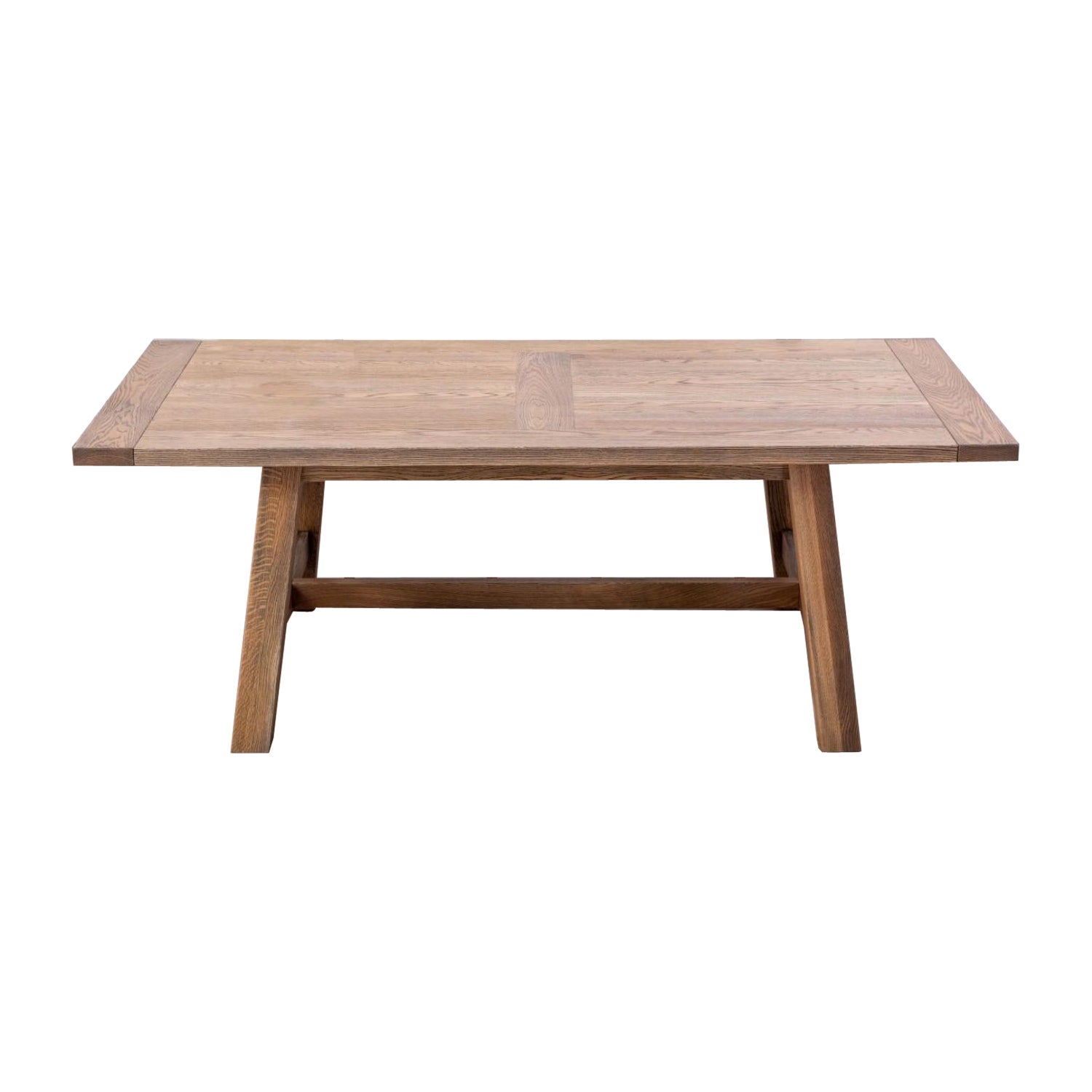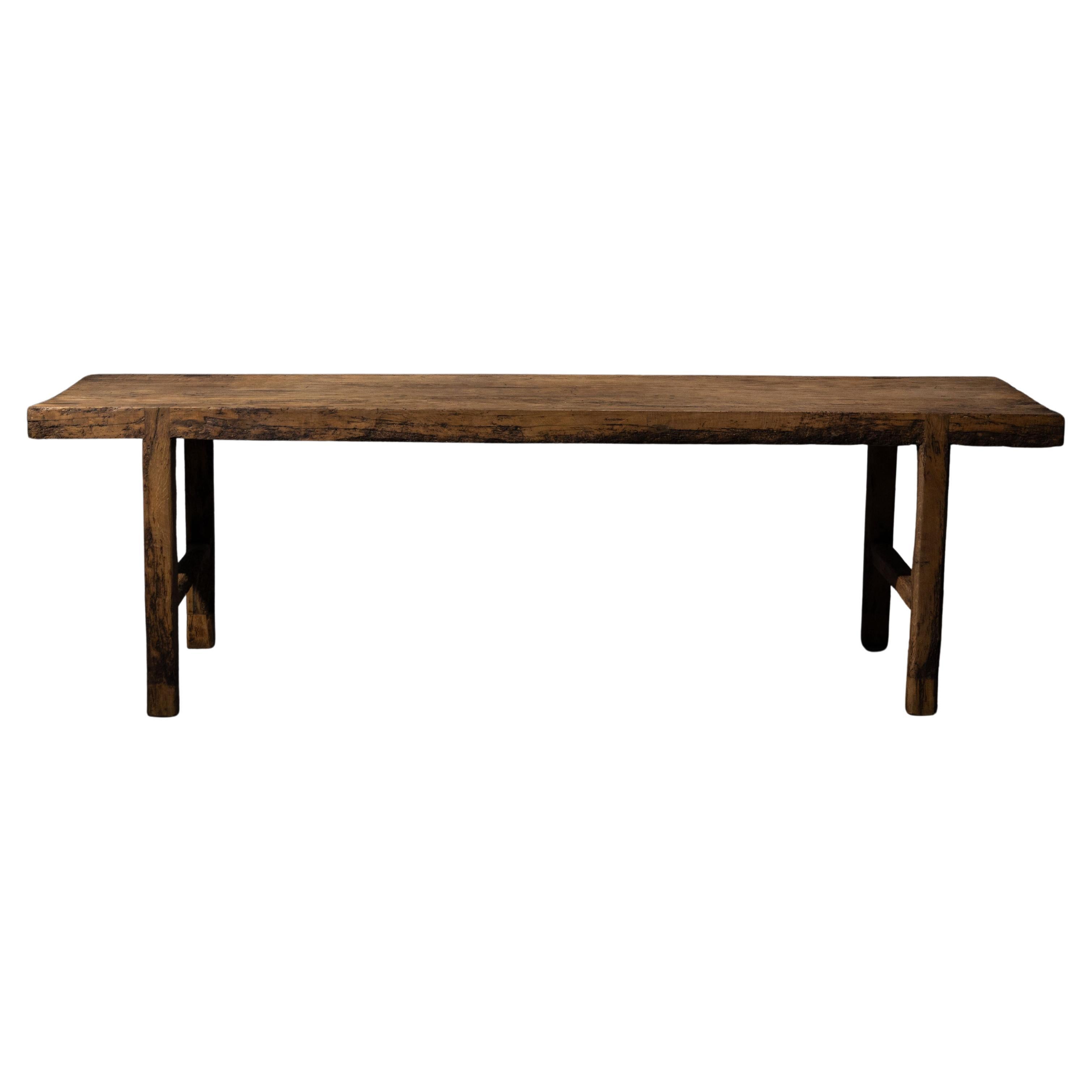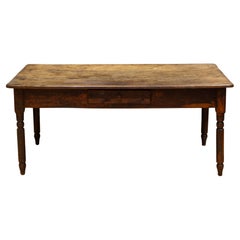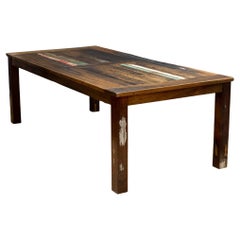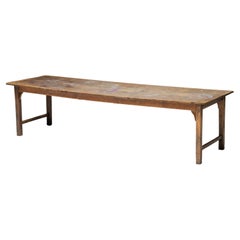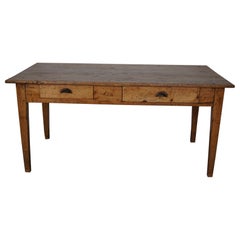
19th C, Rustic Farmhouse Dining Table, c.1880-1890
View Similar Items
Want more images or videos?
Request additional images or videos from the seller
1 of 9
19th C, Rustic Farmhouse Dining Table, c.1880-1890
$2,950List Price
About the Item
- Dimensions:Height: 31.25 in (79.38 cm)Width: 59.5 in (151.13 cm)Depth: 36 in (91.44 cm)
- Style:Rustic (Of the Period)
- Materials and Techniques:
- Period:
- Date of Manufacture:1880-1890
- Condition:Wear consistent with age and use.
- Seller Location:San Francisco, CA
- Reference Number:1stDibs: LU1280227825162
About the Seller
5.0
Platinum Seller
Premium sellers with a 4.7+ rating and 24-hour response times
Established in 2014
1stDibs seller since 2015
1,303 sales on 1stDibs
Typical response time: 1 hour
Authenticity Guarantee
In the unlikely event there’s an issue with an item’s authenticity, contact us within 1 year for a full refund. DetailsMoney-Back Guarantee
If your item is not as described, is damaged in transit, or does not arrive, contact us within 7 days for a full refund. Details24-Hour Cancellation
You have a 24-hour grace period in which to reconsider your purchase, with no questions asked.Vetted Professional Sellers
Our world-class sellers must adhere to strict standards for service and quality, maintaining the integrity of our listings.Price-Match Guarantee
If you find that a seller listed the same item for a lower price elsewhere, we’ll match it.Trusted Global Delivery
Our best-in-class carrier network provides specialized shipping options worldwide, including custom delivery.More From This Seller
View All19th c. Rustic French Farmhouse Table c.1820-1880
Located in San Francisco, CA
ABOUT
A rustic rustic farmhouse table. Two large front drawers with ample storage. Pegged construction visible on the top and on all four tapered legs. The top consists of two wide ...
Category
Antique 19th Century American Rustic Dining Room Tables
Materials
Wood
$2,895 Sale Price
20% Off
19th c. Rustic Farmhouse Table with Large Drawer c.1820-1880
Located in San Francisco, CA
ABOUT
A rustic farmhouse table with turned legs and distressed, painted base. One large, deep front drawer with ample storage. The top consists of three wide planks of wood. Large p...
Category
Antique 19th Century American Rustic Dining Room Tables
Materials
Wood
$2,895 Sale Price
20% Off
Large Reclaimed Australian Hardwood Dining Table
Located in San Francisco, CA
ABOUT
This large custom reclaimed hardwood dining table from Melbourne, Australia is perfect for hosting large gatherings. The classic rustic design is made from a reclaimed cricket...
Category
21st Century and Contemporary Australian Rustic Dining Room Tables
Materials
Hardwood
$3,895 Sale Price
24% Off
Large Reclaimed Australian Hardwood Dining Table
Located in San Francisco, CA
ABOUT
This large custom reclaimed hardwood dining table from Melbourne, Australia is perfect for hosting large gatherings. The classic rustic design is made from a reclaimed cricket...
Category
21st Century and Contemporary Australian Rustic Dining Room Tables
Materials
Hardwood
$3,895 Sale Price
65% Off
19th C. Mexican Retablo "Veronica's Veil", c.1880
Located in San Francisco, CA
About
An original 19th century Mexican folk retablo "Veronica's Veil" or "El Divono Rostro" in Spain . Oil paint on tin.
The Veil of Veronica, known in Italian as the Volto Santo or Holy Face, is a Roman Catholic Relic which, according to legend, bears the likeness of the Face of Jesus that was imprinted on it prior to Jesus' crucifixion. According to Roman Catholicism, Saint Veronica encountered Jesus in Jeruselum on the way to Calvary. When she paused to wipe the sweat (Latin, suda) off his face with her veil, his image was left on the veil.
In the small village of Osa de la Vega in Spain, there lived a couple who led a very pious life. They were Gregorio de la Torre and Isabel Corral. From their father, Juan Montilla, they inherited a picture of the Face of Jesus or the Divino Rostro. A story that is told one day, to the amazement of many who confirmed its veracity, the picture began to perspire with living blood. News of this extraordinary event spread swiftly and widely throughout the land.
CREATOR Unknown.
DATE OF MANUFACTURE c.1880.
MATERIALS AND TECHNIQUES Oil Paint on Tin.
CONDITION Good. Wear consistent with age and use.
DIMENSIONS H 14 in. W 10 in.
HISTORY
Retablos, better known as 'laminas' in Mexico, are small oil paintings on tin, wood and sometimes copper which were used in home altars to venerate the almost infinite number of Catholic saints. The literal translation for 'retablo' is 'behind the altar.' This unique genre of art, deeply rooted in European history, was brought to Mexico with the arrival of the Spanish and then ultimately adopted by New World mestizo natives to become what is known today as the Mexican folk retablo.
The retablo was an art form that flourished in post conquest Mexico and then ultimately, with the introduction of inexpensive mediums such as tin, reached its pinnacle of popularity in the last quarter of the 19th century. With some exceptions, mostly untrained artists from the provinces worked to produce and reproduce these sacred images; some subjects painted more prolifically than others. A typical "retablero" may have reproduced the same image hundreds, if not thousands of times in his or her career.
These oil paintings were sold to devout believers who displayed them in home altars to honor their patron saints. There are virtually hundreds of saints, each invoked to remedy a different situation. "San Ysidro Labrador," the patron saint of farmers, is venerated for good weather...
Category
Antique 19th Century Mexican Folk Art Paintings
Materials
Tin
19th c. Mexican Retablo "Veronica's Veil" c.1880
Located in San Francisco, CA
ABOUT
An original 19th century Mexican folk retablo "Veronica's Veil" or "El Divono Rostro" in Spain . Oil paint on tin.
The Veil of Veronica, known in Italian as the Volto Santo or Holy Face, is a Roman Catholic Relic which, according to legend, bears the likeness of the Face of Jesus that was imprinted on it prior to Jesus' crucifixion. According to Roman Catholicism, Saint Veronica encountered Jesus in Jeruselum on the way to Calvary. When she paused to wipe the sweat (Latin, suda) off his face with her veil, his image was left on the veil.
In the small village of Osa de la Vega in Spain, there lived a couple who led a very pious life. They were Gregorio de la Torre and Isabel Corral. From their father, Juan Montilla, they inherited a picture of the Face of Jesus or the Divino Rostro. A story that is told one day, to the amazement of many who confirmed its veracity, the picture began to perspire with living blood. News of this extraordinary event spread swiftly and widely throughout the land.
CREATOR Unknown.
DATE OF MANUFACTURE c.1880.
MATERIALS AND TECHNIQUES Oil Paint on Tin.
CONDITION Good. Wear consistent with age and use.
DIMENSIONS H 14 in. W 10 in.
HISTORY
Retablos, better known as 'laminas' in Mexico, are small oil paintings on tin, wood and sometimes copper which were used in home altars to venerate the almost infinite number of Catholic saints. The literal translation for 'retablo' is 'behind the altar.' This unique genre of art, deeply rooted in European history, was brought to Mexico with the arrival of the Spanish and then ultimately adopted by New World mestizo natives to become what is known today as the Mexican folk retablo.
The retablo was an art form that flourished in post conquest Mexico and then ultimately, with the introduction of inexpensive mediums such as tin, reached its pinnacle of popularity in the last quarter of the 19th century. With some exceptions, mostly untrained artists from the provinces worked to produce and reproduce these sacred images; some subjects painted more prolifically than others. A typical "retablero" may have reproduced the same image hundreds, if not thousands of times in his or her career.
These oil paintings were sold to devout believers who displayed them in home altars to honor their patron saints. There are virtually hundreds of saints, each invoked to remedy a different situation. "San Ysidro Labrador," the patron saint of farmers, is venerated for good weather...
Category
Antique 19th Century Mexican Folk Art Paintings
Materials
Tin
You May Also Like
Rustic Farmhouse Dining Table, France, 19th Century
Located in Antwerp, BE
19th-century French farmhouse dining table with a naturally aged patina, embodying the timeless beauty of the French countryside. The table’s surface, adorned with colourful paint sp...
Category
Antique 19th Century French Rustic Dining Room Tables
Materials
Wood
Antique Greyed Oak 19th Century French Rustic Farmhouse Dining Table
Located in Nijmegen, NL
This elegant table was made in france in the 19th century. The table was made in solid oak with beautiful grain patterns. It has a very warm color and the table shows marks of use, o...
Category
Antique 19th Century French Rustic Dining Room Tables
Materials
Oak
Antique Light Gold Oak 19th Century French Rustic Farmhouse Dining Table
Located in Nijmegen, NL
This elegant table was made in france in the 19th century. The table was made in solid oak with beautiful grain patterns. It has a very warm color and the table shows marks of use, o...
Category
Antique 19th Century French Rustic Dining Room Tables
Materials
Oak
Antique Fruitwood 19th Century French Rustic Farmhouse Dining Table
Located in Nijmegen, NL
This elegant table was made in France in the 19th century. The table was made in fruitwood and oak / chestnut with beautiful grain patterns. It has a very warm color and the table sh...
Category
Antique Late 19th Century French Dining Room Tables
Materials
Fruitwood
Antique 19th Century French Rustic Farmhouse Dining Table Fruitwood
Located in Nijmegen, NL
This elegant table was made in France in the 19th century. The table was made in fruitwood with beautiful grain patterns. It has a very warm light color and the table shows many mark...
Category
Antique 19th Century French Country Dining Room Tables
Materials
Fruitwood
Antique Elm 19th Century French Rustic Farmhouse Dining Table
Located in Nijmegen, NL
This elegant table was made in France in the 19th century. It has a tabletop from elm with beautiful grain patterns. It has a very warm color and the table shows many marks of use, o...
Category
Antique 19th Century French Dining Room Tables
Materials
Elm
